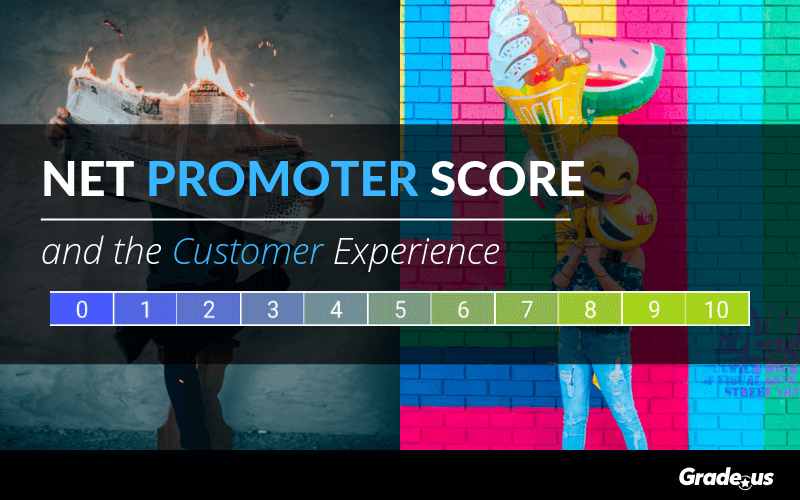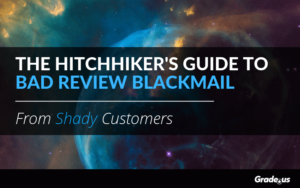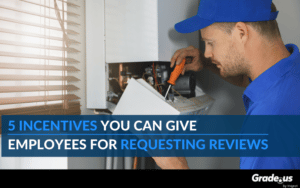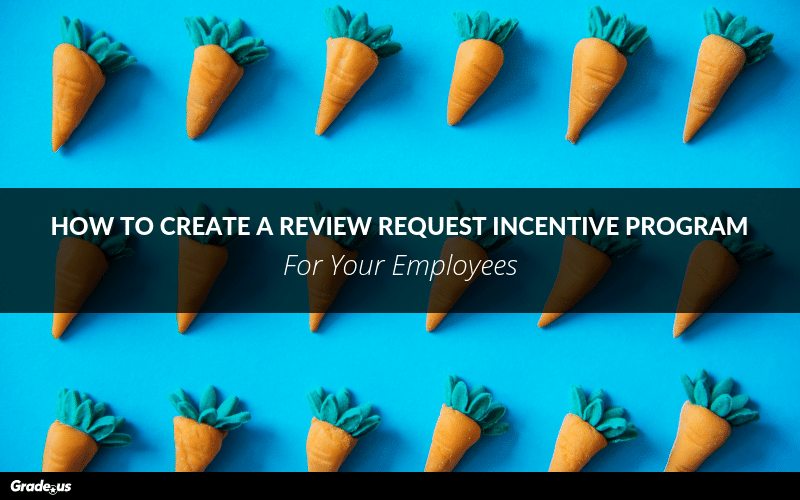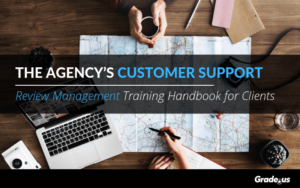CX (customer experience) has always mattered and the net promoter score (NPS) allows us to evaluate that experience.
As companies become more innovative in the ways that they serve customers, a CX strategy has swiftly emerged as the #1 competitive advantage. In many industries, there are the companies that win the CX game, and then there's everyone else.
Where do you go to order stuff online?
Most people just said, "Amazon." Because there's Amazon, and then there's everyone else.
Sure, you know you've got 10,000+ other websites to order from, including big box stores. But Amazon is the one that offers 1 or 2 day shipping. In some cities, you can get Amazon to your door even faster.
Local businesses don't have to be the next Amazon. You just want to be #1 in your city. Your city's go-to car dealership or Mexican restaurant or whatever.
You want all other local companies like you to fall into that "everyone else" category. Before you can craft an incredible customer experience, or even a good one, you have to know where you stand.
Enter the Net Promoter Score (NPS)
For those who aren't familiar with it, NPS is a deceptively simple concept. NPS consists of a single simple question measured on a 0 to 10 scale.
The question:
"On a scale of 1-10, how likely are you to recommend our brand to your friends and colleagues?"
Customers then submit their rating.
Every 9-10 is considered to be a "Promoter." That's a loyal customer who will sing your praises and will use your company and yours alone.
Every 7-8 is a satisfied but unenthusiastic customer, also known as a "Passive." Most people fall into this category, as the most common customer experience, by far, is still "Meh."
Every 0-6 is a "Detractor," someone who is so unhappy with your company that they may in fact start warning people to avoid using your products or services.
When you've gathered all of your answers, you take a percentage of your Promoters, Passives, and Detractors. You ignore the Passives in favor of subtracting your detractor score from your promoter score. The resulting number is your NPS, which can range from -100 to +100.
How do you use Net Promoter Score?
The NPS has been around since 1993, and Fortune 500 companies swear that you can use it for everything from improving employee engagement to promoting brand awareness.
But its real value is helping you measure customer loyalty and happiness.
Net Promoter Score vs. Online Reviews
But wait, isn't that what reviews are for?
There are a few key differences. Reviews are outward facing, meant to be published and read by potential customers.
The NPS is an internal metric. It's not out there unless you publish it, or allow your company to end up in research results about NPS. It's meant to give you a benchmark for your performance, a bird's eye view of the only question that might really matter to your company's ability to grow.
NPS metrics and reviews can work hand in hand to give you incredible insights into your company.
Getting to Know Your Company
You're not going to have every customer respond to these surveys. Every customer you have won't respond to reviews. There's a Venn Diagram that could demonstrate that there are also customers who will respond to both. And there are some who won't respond to either.
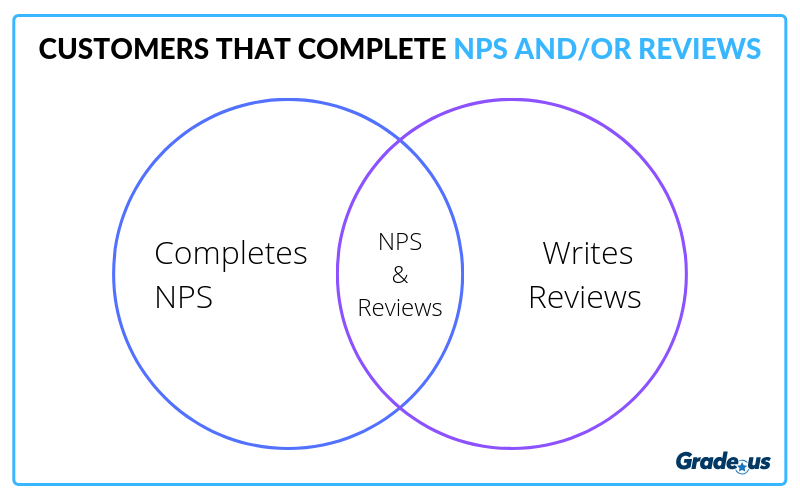
Online reviews and your NPS score give you two different ways to look at the same problem: What is my company doing right, and what is it doing wrong?
If your score is particularly low, start analyzing your reviews to find out what customers are especially unhappy about. If it's particularly high, you can see what customers really love. Double down on what's working.
On a yearly or even quarterly basis, you can send out more NPS surveys to monitor improvement or if any new problems have popped up.
Worth noting: don't ignore "Passives" just because they are ignored when calculating the score.
People with a "Meh" experience are very likely to be snapped up by competitors. Think about your auto insurance company. Unless you've been in a wreck and your company's been super helpful to you, car insurance is a thing most people evaluate largely on price.
If you're like me, you're happy to jump ship if someone will give you the same coverage for the same rates.
Think back. Has an auto insurance company ever "wow'd" you?
I'll tell you that exactly zero of them have ever "wow'd" me. Most of them sit on their haunches, content that every driver has to buy their product from someone. (Apologies to the auto insurance companies that are producing a 100 NPS experience to customers. I'm not speaking to you.)
But that's probably why the average NPS for the auto insurance industry is a whopping 0. If you want to retain your customers, "Meh" is not enough. Meh is your ticket to being "everyone else."
But if you have more passive customers than detractors, there's some hope.
While those with low NPS scores are scrambling just to reach a point where most of their customers don't gnash their teeth every time they hear from them, you have the opportunity to exercise some creativity. You have the foundation you need to build in the convenience and ease-of-use features that customers love. You have the foundation to build some talk triggers.
Just be advised: neither of those things do any good without that foundation. Nobody gets excited about very conveniently ordering up some subpar service.
Remember, even a modest improvement in customer experience can generate an impressive amount of revenue growth.
What's the benchmark for a great Net Promoter Score?
You can evaluate your score by looking at one of four factors.
1. Look at your industry averages, then compare apples-to-apples.
For example, Shep Hyken shared that last year the average score for healthcare providers was 62. Telecommunications only had an average score of 24. A score of 30 is great if you're in the Telecom business and lousy if you're running a local clinic.
2. Evaluate your review stars and your response rate for both the NPS survey and reviews.
The lower your response rate on both counts, the less reliable your results will tend to be. If you have a low NPS and a lot of stars, or a high NPS and very few stars, something is wrong.
3. When you're sending out the survey.
That's going to depend on your industry, and what makes sense for your customers. And common sense. I was surprised to learn that some companies had automated these surveys so poorly that they were going out before customers had gotten their products. Or after customers had returned products. You don't want to wait so long they forget all about you, but you don't want to jump the gun, either.
No matter when you choose to send the survey, you might not want to do it at the same time you ask for reviews, as that will split customer attention. Ask for reviews first.
Then segment your customers, if you can, into those who wrote a review and those who didn't. Reviewers have already told you if they'd recommend your service. They either recommended it, or didn't, to the entire Internet.
Everyone who didn't write a review could get an NPS survey a week or so later. It's quicker, easier, and less public. Not every customer is a reviewer, no matter how much we'd like them to be.
4. Score evolution.
As responses are submitted, your score is going to move up and down. Is it mostly trending upward, trending downward, or remaining flat? Improvement is cause for celebration. Backsliding means your company has more to work on.
Many successful companies set NPS targets and measure their performance by how close they came to meeting those goals.
Starting an NPS Initiative is Easy
If you think you're going to have to launch a vast, expensive new effort to take advantage of your NPS score, breathe easy.
Grade.us just launched a brand new net promoter score layout to the review funnel options.
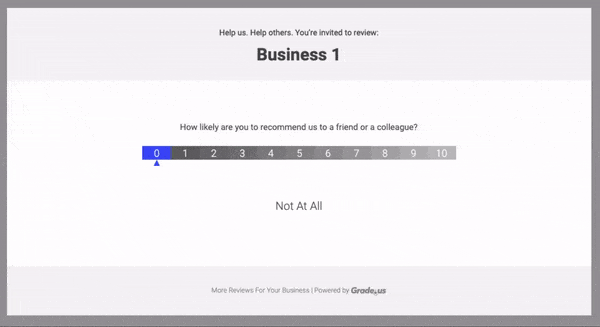
You can customize the label beneath each number which makes customers more confident about choosing one.
It also standardizes people's perception of the number. Otherwise, your 7 might be my 9, and that subjectivity gap makes it harder to read the data accurately.
You'll be able to check your NPS rating whenever you want, because the ongoing average score gets reported on your dashboard. A customized email drip campaign can help you get your customers to the review funnel where they'll complete the NPS process.
NPS Controversy
Transparently, the journalist in me feels compelled to tell you that this year there are a lot of people criticizing the NPS metric. It seems to be one of those trends that's going around the business magazines right now.
I suspect this is because some companies have tried to use it for measuring everything under the sun, when in reality it is good for one thing: measuring customer experience.
Try and use it for anything else, and you're going to generate a misleading metric that doesn't tell you anything at all.
If you know who your promoters are, NPS can help you figure out who you might ask for referrals, especially if that data is fed back into your CMS. You can do the same with your 5-star reviewers.
But in general? Avoid the pitfalls by remaining laser-focused on CX. Use your results to help improve it. Find other metrics to help you with other business problems.
Has your company been tracking its Net Promoter Score?
- When do you send the NPS surveys out, and to whom?
- What have you done with the data when you’ve received it?
- Have you made some decisions about NPS that I haven’t talked about here?
Be sure to let us know in the comments below! And let us know if you use the Grade.us Net Promoter Score layout.
We'd like to know about your customer experience.
About the Author
Raney C. Hudson
Raney C. Hudson is an independent content consultant with a 10+ year track record in the digital marketing industry.

